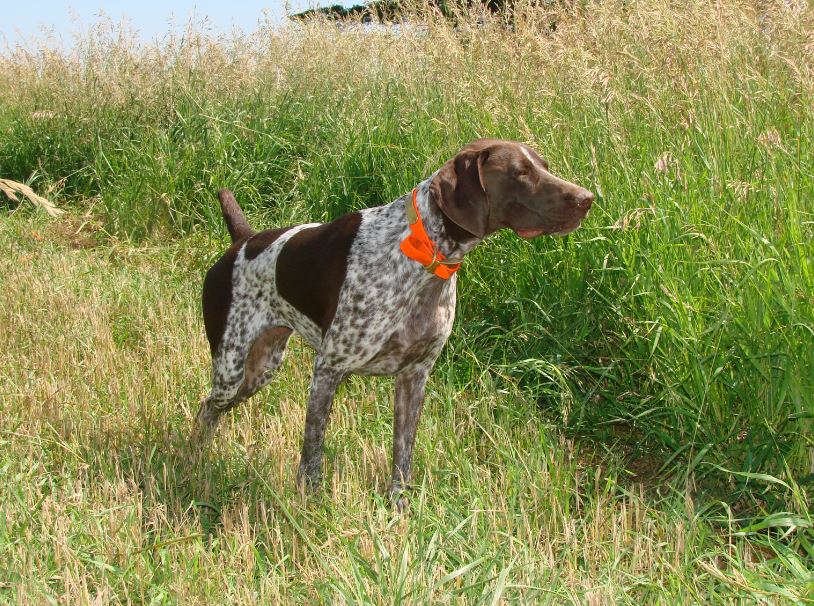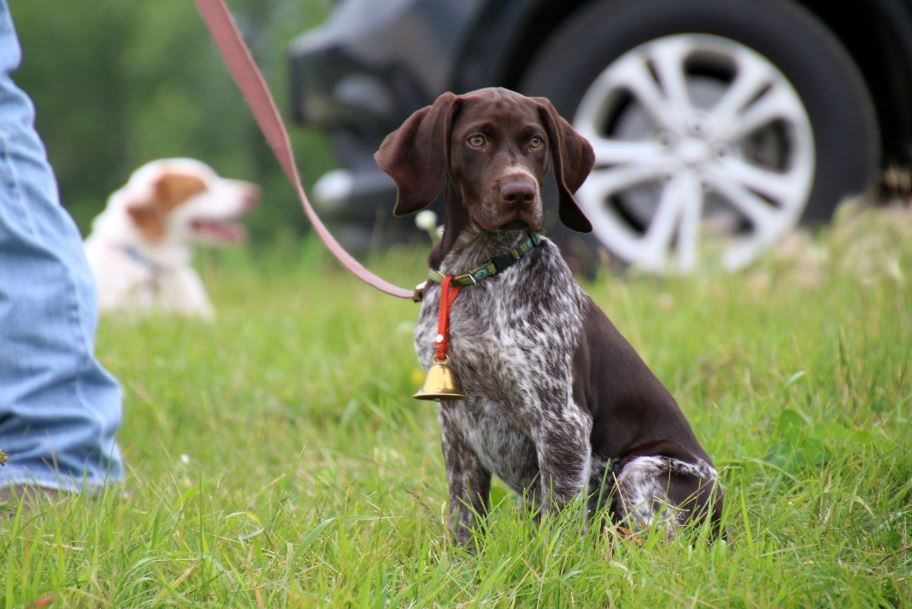Meet the efficient, effective, do-it-all Swiss Army Knife of hunting dogs
By Bill Miller
Its versatility is legendary. Even those unfortunate enough to not spend much time in the outdoors know about the Swiss Army Knife. It’s a pocketknife, but it’s so much more. It’s also a can opener, a corkscrew, a scissors, a saw, a file, even a tweezers and a toothpick
Typical Teutonic design principles make it functional, rugged … some say, over-built. Its color, the simple Swiss Army logo, and even its silhouette, are all iconic. When you look at it, you know exactly what it is and its purpose for being. If you are happy owning a single knife for all your outdoor needs, the Swiss Army Knife is a superb choice.
Now take that description, but put it into the nomenclature of bird dogs. You have aptly and precisely described the German Shorthaired Pointer (GSP). If you are the kind of hunter (and we’re intentionally omitting the modifiers “bird” and “upland” here) who wants one dog with the capability to handle any task – in the field and at home – the GSP is a superb selection.
THE NAME
As might be expected from German efficiency, the name of the German Shorthaired Pointer is very specific and to the point. Germany is where it was developed. It indeed has short hair, which is a main differentiator between it and the Verein Deutsch Draathar (which translates to True German Wirehair) and the German Longhaired Pointer. And it is primarily a pointer of upland birds, but it is so much more.
Informal nicknames are simply “short hair” and GSP.
BREED HISTORY
The GSP was recognized by the American Kennel Club in 1930, but in its native Germany its origins date back to the 17th century or before. According to the AKC, it’s likely the GSP descended from an early breed called the German Bird Dog which itself was a combination of even earlier breeds. Along the way, there was influence of Spanish and English pointers as well as several hounds and tracking dogs. The first studbook for GSPs didn’t show up until 1870.
APPEARANCE
The silhouette of a German Shorthaired Pointer locked on point, one paw lifted in the air, frozen in space and time except for the slightest quiver of that stubby tail pointed straight back, will make a bird hunter’s heart skip a beat … or several. While the silhouette is universal, the color and pattern of a GSP’s coat is far, far from it. Most GSP coats incorporate dark brown, called “liver”, and some are black. The dog’s head is usually solid or nearly solid while the body can range from solid to patched to freckled to nearly all white.

The GSP is a continental pointing dog – meaning its origins are on the continent of Europe rather than the British Isles. As is the trademark of continental breeds, the GSP has a docked tail. You may think this an unnecessary and archaic ritual, but then you’ve probably never hunted quail in the prickly pear or ruffed grouse in blackberry brambles or pheasants in frozen cattails, thorny plum thickets or dense willow tangles. A long tail beating the cover in merciless thorns is quickly converted into a bloody, painful, infection-prone mess. And back in their history when shorthairs’ predecessors were used for cornering dangerous game like wild boar, a long tail was just another appendage onto which cornered quarry could grab a fatal hold.
CHARACTERISTICS
The GSP is currently the 11th most popular breed in the American Kennel Club registries. It’s third in the AKC sporting breeds behind only the Labrador and Golden retriever, and the GSP is the most popular pointing breed. It’s also the most popular breed registered with the North American Versatile Hunting Dog Association (NAVHDA).
In its “Aims, Programs, Test Rules” NAVHDA defines versatility as “the dog that is bred and trained to dependably hunt and point game, to retrieve on both land and water, and to track wounded game on both land and water.” This standard could well be the definitive description of the characteristics of the GSP. Tack on a biddable nature that makes a properly socialized shorthair a great family pet and guardian, and you have even more evidence equating the GSP breed to the iconic SAK (Swiss Army Knife) … one dog to do it all.
TRAINING THE GSP
While the shorthair has genetics for ultimate hunting versatility, it takes the right training and environment to bring it out. GSPs tend to mature faster than other pointing breeds, but owners must resist the temptation to push too fast or train on a timetable.
Focus on the basics of obedience first. Only then should you turn to simple fieldwork. Don’t graduate to more advanced skills until the foundation is securely established and proven.

If you’re new to the versatile breeds, attend NAVHDA events and get to know the owners in your local breed club and versatile breed training groups.
BREED COMMUNITY
To learn more about the breed, its standards, and what a GSP is capable of, check out resources from:
•
American Kennel Club
•
German Shorthaired Pointer Club of America
•
North American Versatile Hunting Dog Association
CONCLUSION
It’s not hard to see that GSP is the Swiss Army Knife of hunting dogs. With the right training it will handle any upland bird situation with aplomb. It will retrieve the birds you shoot, as well as web-footed fowl, and furred game like rabbits and squirrels if you ask it to. Given a chance, it will even do a masterful job of tracking down that whitetail you hit “just a little too far back.” The cherry on top is that with the right socialization and the chance to get good exercise every day, a shorthair makes a terrific family dog and all-around good citizen, to boot.
Is the Swiss Army Knife the “BEST” knife for every task under the sun? Nope. None is. But with one on your side, there’s not much you can’t do and do very well!
SAK = GSP.
